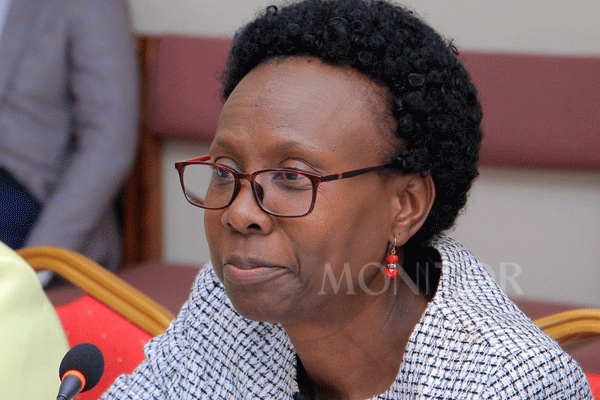Prime
Govt unveils Shs158b new health project

Dr Jane Ruth Aceng, the Minister of Health. PHOTO/FILE
What you need to know:
- The National Health Supply Chain Roadmap project that is expected to run from 2022 to 2032, aims at ensuring sustainability and accelerating government leadership and ownership of the health supply chain planning, financing and management in line with the planned decrease in development partners’ financial support, especially in essential medicines and supplies.
Government has unveiled a 10-year project worth $44.8m (Shs158b) to ensure sustainability of development outcomes invested in the health sector over time by development partners.
The National Health Supply Chain Roadmap project that is expected to run from 2022 to 2032, aims at ensuring sustainability and accelerating government leadership and ownership of the health supply chain planning, financing and management in line with the planned decrease in development partners’ financial support, especially in essential medicines and supplies.
Speaking during the launch of the project in Kampala recently, Health minister, Dr Jane Ruth Aceng, said the project emphasises a one-government approach as critical to its effective implementation.
Dr Aceng said the implementation of the roadmap is estimated to cost $44.8m across the 10 years.
“This investment will be needed to ensure the technical implementation environment (human resource, ICT equipment, operational management and supervision) is conducive for both the central government and local government to effectively oversee and run the health supply chain of this country,” she said.
Dr Aceng said since 2001, government allocation to essential medicines and health commodities, priority health products, and equipment has been on an upward trajectory.
She explained that the government meets the bulk of funding essential medicines and health supplies (EHMS) through the National Medical Stores (NSM) and Joint Medical Store (JMS), respectively.
Dr Aceng said the availability of a basket of tracer EMHS has greatly improved since the first health sector strategic plan (2010) where the health sector was tracking availability of only six tracer EMHS.
Currently, 41 tracer items are being tracked on a regular bimonthly basis with the average availability of the basket of EMHs standing at 78 percent as of September 2021.
Dr Aceng also called on the Ministry of Public Service to recruit more health workers, as well as improve their wages.
The United States Agency for International Development (USAID) Mission director, Mr Richard Nelson, said in 2021 alone, the US government provided $126m (Shs446b) to procure EMHS, including antiretroviral drugs worth$77m (Shs272b).
Prime Minister Robinah Nabbanja, in a speech read for her by the Minister without Portfolio, Ms Lukia Isanga Nakadama, said: “The through this roadmap, the government will strategically take on interventions that bring the country closer to its vision of self-reliance consistent with the Uganda Vision 2040.”
She added: “The Office of the Prime Minister will coordinate the roadmap implementation across various ministries, departments and agencies while working closely with the National Planning Authority through the third National Development Plan (NDPIII). This arrangement will realise the roadmap’s aspiration of a ‘One Government Approach.”
Responding to the comments that were being made by different participants, the deputy Secretary to the Treasury, Mr Patrick Ocailap said: “I want to assure you that government is committed to increasing financing for interventions on the health commodities supply chain gradually in a bid to reduce over-reliance on financing by development partners.”




